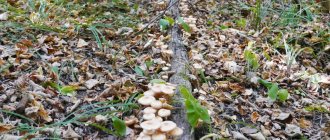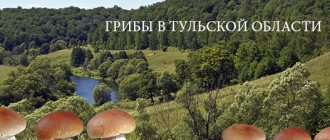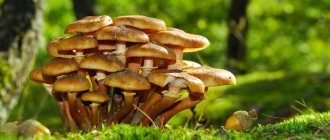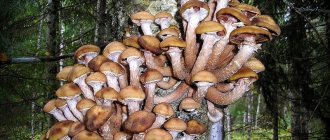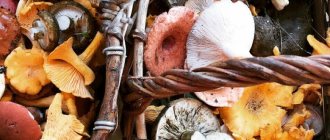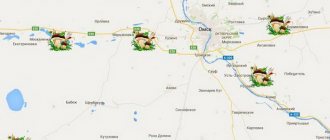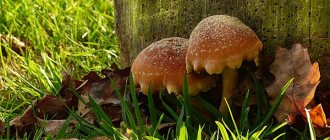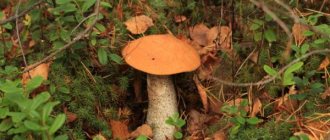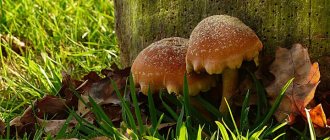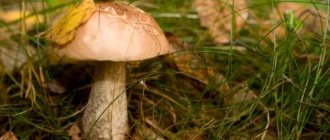Experienced mushroom pickers know where to look for morels in 2022. Knowing when to pick these mushrooms in the Moscow region, you can make substantial supplies for the winter.
Morels are legumes, edible mushrooms native to the Northern Hemisphere. They are found in Australia and on the island of Tasmania.
There are several subspecies permitted for consumption. Some people believe that the mushrooms in question are toxic, but the substance they contain can be removed by boiling the product for 10-15 minutes.
When to go for morels
The exact dates when the first morels can be collected in the Moscow region in 2022 are unknown.
Mushrooms are found from mid-April to June 15-17.
There are several factors influencing their growth and distribution:
- weather;
- presence of snow cover;
- soil moisture.
Mushroom pickers use items that allow them to determine the approximate dates when it is best to collect morels in the Moscow region in 2022. For example, if an aspen tree has fluffy catkins, this can serve as an unmistakable signal to start mushroom hunting. At the same time, night blindness flowers and the first sprouts of grass should appear.
Morels begin to grow actively when the weather becomes warm and the soil becomes moist. If the ground has warmed up, they appear on hills and forest edges in a matter of days. By the second ten days of May they can be seen in more protected, humid areas, in the thickets of the forest.
Do you want to reap a rich harvest? Try to find bald spots well-warmed by the sun and saturated with moisture in the forests of the Moscow region.
Attention! The collective appearance of morels occurs from late April to May.
Where to collect
Common morels, as well as varieties of this mushroom such as round, conical and cap morels, are found almost everywhere in the Moscow and neighboring regions
The fruiting bodies of these mushrooms are quite fragile, so they should be collected with extreme caution.
Many of the earliest edible mushrooms appear in large groups on old and rotten stumps or dead wood of deciduous and coniferous wood.
Meadow or field honey mushrooms easily tolerate spring cold at night and prefer rotting deciduous wood, dead wood and rotting chips, stumps and the soil near them. Large groups of edible honey mushrooms can be found in spring in deciduous and mixed forest zones; somewhat less often they grow in coniferous forests, as well as in gardens or parks.
When is the best time to look for morel mushrooms - in April or May?
Those trying to determine when to collect morels in the Moscow region in 2022 should say that the mushrooms that appeared in May are better in their characteristics. They are less watery and more dense. Accordingly, their taste is more intense. It is better to take mushrooms with a strong stem and a dense cap.
It is important that they are not overripe or old.
Morels, like other mushrooms, like moisture. For this reason, they collectively appear in places where there has been heavy rainfall. They should also be looked for in areas of massive snow melt. The emergence of morels in autumn is a rarer occurrence, while in June the mushroom may appear after intense rains.
But if a mushroom picker wants to guarantee a harvest of the mushroom in question, he should hurry up and start searching in the May season. It is considered the main time when everyone will start collecting morels in the Moscow region in 2022.
What date is Trinity in Russia for Orthodox Christians in 2020?
Sulfur-yellow tinder fungus
When many hear the word “tinder”, the first thing they remember is a hefty “flying saucer” firmly stuck to an old stump or fallen timber. Eating these mushrooms is out of the question; all that remains is to offer them to the beaver as a dessert. However, having barely broken through the bark, the still young fruiting bodies of tinder fungi are tender and juicy, and therefore quite usable. But not all, but only certain species, a couple of which were included in our spring list.
The sulfur-yellow tinder fungus is one of them. Its fruiting bodies somewhat resemble yellow dough that has come out through cracks in the wood. They appear on deciduous trees, less often on coniferous trees, in May - approximately in the second half of the month. The mushroom does not bear fruit for long - until the end of June.
We rarely collect it, but in some places abroad it is considered a delicacy and has the nickname “tree chicken.”
However, you should be careful with it: there is information that a mushroom grown on coniferous trees causes poisoning and allergic reactions when consumed; the same effect can be observed when eating old fruiting bodies.
Advice from experienced mushroom pickers
People who have been collecting mushrooms for many years tell how they have been going for morels since the appearance of wildflowers. Now in the Moscow region you can find many areas with logging sites. Such areas, in their opinion, should be visited first. It is necessary to consider fallen, old trees, mainly birches.
This approach makes it possible to find previously untouched clusters of fungi. According to mushroom pickers, this method only works if you visit only logging sites and look for trees that were cut down a long time ago. In this case, you can go for morels already in April. This will allow you to collect large quantities of mushrooms, since mushroom pickers usually do not walk through the forests during this period.
Visiting all other places to look for morels before May may be futile.
In the south of the Moscow region you can find birch forests. There are rotten logs, half-grown into the ground. The characteristic growth areas of morels can be recognized by the special yellow convolutions. It is useless to go to the edges and spruce forests. It’s better to look deep into the forest, into the lawns, where you can see last year’s leaves on the ground.
If there are relatively few flowers, and the grass has not really risen, there should be no problems with mushrooms. Sometimes morels appear later due to weather conditions.
Where to go for honey mushrooms near Moscow
Outside the capital, they grow on Novovoronino, Golygino, Shapilovo and Morozovo, near the Gremyachey waterfall. The most fruitful route is the deciduous massif from the village of Mitropole to the village of Daryino. In the Leningrad side, mushrooms live near Firsanovka, Nazaryevo, Poyarkovo. Honey mushrooms grow on stumps in the Fryazevo area to the east or west. And the forest near Elino (Firsanovka station) is considered the edge. Sometimes mycelium is found under the bark of dead trees or on the stems of fallen leaves. Meadows settle in open areas of forests. To bring home a full basket, they look for fruits in old forests. Over the years, many old stumps and trunks of dead trees have accumulated in them, emerging from under the soil of trunk roots and dead wood - favorite places for mushrooms.
Mushrooms settle in forest areas rich in vegetation, birch thickets, coniferous forests, and forest plantations. A lot of honey mushrooms grow in the Serebryano-Prudsky district, not far from the village of Uzunovo. The villagers call this wooded area “Lapinsky Forest” because they collect a lot of winter mushrooms here. In Kolomenskoye they go around the village of Kolodkino, located 8 km from the borders of Kolomna, as well as the villages of Provodnik and Borisovskoye. Honey mushrooms are found in abundance in the forest along the edges of the railway tracks near the station. Kuzyaevo.
Mycologist's opinion
M. Vishnevsky, who heads the Union of Mushroom Pickers of Russia, gives his advice on when it is best to go for morels.
He claims that if there are no problems with the weather, mushrooms will begin to appear from April 10 to 15. But this year there was a cold snap, and therefore 2-3 weeks must be counted from the indicated period.
Some morels, he said, are already visible in the Moscow region. However, due to the cold weather, they went into hibernation. As soon as it warms up again, they will continue to grow. The mycologist says that to resume the development of morels, a temperature of +3 degrees Celsius at night or higher is required.
In addition, the head of the Mushroom Pickers Union shared information about what the current season will be like for mushroom pickers. Each year has its own characteristics, and therefore mushrooms react to what is happening differently, as the specialist notes. Vishnevsky states that 2019 in the Moscow region produced an average mushroom harvest. But it was not morels that grew most actively, but oyster mushrooms and rows.
Useful and healing properties
Conical morel, semi-free morel and ordinary morel contain vitamins A, PP, phosphorus and calcium. This set is useful for vision, metabolic processes and bone tissue.
In addition, these mushrooms contain complex medicinal substances, which:
- strengthen the eye muscles. As a result, senile farsightedness is corrected;
- prevent clouding of the lens and, thus, provide prevention of cataracts;
- increase appetite, help cope with asthenia and anorexia;
- have an analgesic effect. Alcohol tincture of morels has long been used for rubbing against radiculitis and rheumatism;
- improve digestion, promote effective absorption of nutrients;
- raise general tone, are antidepressants;
- have antimicrobial and antiviral activity, increase immunity.
The best areas
In addition to the timing, it is important to know where morels grow in the coming season within the Moscow region. There is a map of the Moscow region with mushroom places. The best option would be to travel to the west or south. It is here that there are forests, tree plantations, and islands where the described species grows. Morels can live in any forest, and they can also be seen in the parks of the capital. You can go to the same Teply Stan.
You can look for them in any forests in the Moscow region. Mushroom pickers mainly visit areas with pine plantations. Experts say that these mushrooms prefer deciduous forests, and the presence of pine trees seems to be an optimal addition to their growth and development.
If there was a fire in the forest 3 years ago, then the species in question is most likely present in it.
Knowing the key signs of choosing the right place for your search, you can determine where morels are guaranteed to grow in the Moscow region:
- You should look for sandy substrates. They warm up better and provide breathing to the tissues of the mushrooms.
- The culture prefers moisture, so it is often found on hillocks and other places where there are small growths of grass.
- Morels often grow on peat soils. For this reason, the presence of a swamp can serve as a guide during the search.
- There are chances of picking up a full basket not only in the forest area. You can look for such mushrooms in abandoned apple orchards and summer cottages.
Morels are also found in other areas, for example, in clearings, along the slopes of ravines, among bushes. Sometimes they are found within the city, in city squares and parks.
The most mushroom places in the Moscow region
Mushrooms are unpredictable “creatures”, so the harvest does not vary from year to year. But there are forests near Moscow that are located at a considerable distance from Moscow and are known for the fact that mushrooms can almost always be found there.
Belarusian direction
- The stations “Sushkinskaya”, “Petelino”, “Chastsovskaya” and “Portnovskaya” are in a row, you can get off at any one. To the south of the railway there is a large forest in which mushroom pickers collect boletus, aspen and porcini mushrooms.
- Stations "Skorotovo", "Khlyupino". For chanterelles, go in a south-west direction from the platform, to the villages of Raevo and Alyaukhovo. And there are a lot of white and boletus to the north of the railway, near the villages of Maryino and Chigasovo.
The outskirts of the village of Raevo.
Gorky direction
Stations "Fryazevo", "Kazanskoye". The mushroom forest is located about 3 kilometers south of the railway, behind the village of Vsevolodovo. Here you can find chanterelles and porcini mushrooms.
Kazan direction
- Station "Gzhel". To the north of the railway, in the vicinity of the villages of Minino and Konyashino, porcini mushrooms grow.
- Station "Kuzyaevo". To the north of the platform there is a forest where you can collect white and chanterelles. Good mushroom places are located a little further from the abandoned pioneer camp “Podmoskovny”.
Kiev direction
- Bekasovo station. For mushrooms, it is better to go east or south from the platform towards the villages of Afanasovka, Ivanovka, Mogutovo and Savelovka.
- Station "Bashkino". The mushroom forest is located northwest of the railroad.
Kursk direction
- Kolkhoznaya station. There are good mushroom places around the railway where you can find all kinds of mushrooms from russula to boletus. In the east - in the vicinity of the village of Nikonovo and along the banks of the Rozhaika River. In the southeast, mushrooms are hidden behind the village of Sharapovo, and in the west - in the vicinity of the village of Panino.
- Station "Sharapova Okhota". To the east of the station, in the direction of the villages of Pleshkino and Petrukhino, there is a large forest in which there are especially many honey mushrooms.
- Avangard station. For mushrooms, go east from the station, in the direction of the village of Vskhody, as well as into the forests stretching along the banks of the Rechma. Here you can find mushrooms of all kinds.
Leningrad direction
Pokrovka station. In the vicinity of the station you can find chanterelles, boletus and boletus, if you go northeast towards the village of Koskovo or south to the village of Zamyatino.
Paveletskaya direction
- Stations "White Pillars", "Barybino". A famous mushroom place in the Moscow region, where you can find white mushrooms, honey mushrooms, aspen boletuses and boletus mushrooms. You need to walk about 4 kilometers west from the railway.
- Stations "Velyaminovo", "Privalovo", "Mikhnevo". Rich mushroom forests are located on both sides of the railway, 2-3 kilometers from the stations.
Riga direction
- Yadroshino station. In the forest located on both sides of the railway, you can find white mushrooms, honey mushrooms and boletuses.
- Station "Rumyantsevo". Good mushroom forests are also located on both sides of the railway.
- Station "Lesodolgorukovo". Mushroom spots begin two kilometers north of the station, towards the villages of Nudol-Sharino and Maryino.
Savelovskoe direction
- Stations "Morozki", "Tourist". Boletus, boletus, boletus and chanterelle grow on both sides of the railway. In the west, in the vicinity of the villages of Novlyanka, Grigorkovo, Paramonovo, Strekovo, and in the east - in the vicinity of Sboevo, Grishino, Novinki, Shustino.
- Taldom station. At a distance of 4 kilometers to the southwest of the station there are many chanterelles.
Stupino
For boletus, russula, birch boletus, and nigella, go to the Stupinsky district. Stop Mikhnevo station in Paveletsky direction. From the railway you will have to travel three kilometers. The next stop on this route is Shugarovo station. Here, closer to Torbeev, there are porcini mushrooms. Near the Zhilevo station, on both sides of the railway you will find boletus mushrooms. You will collect russula and boletus at Stupino and Akri stations.
Forests of Klinsky district
Hunters for porcini mushrooms must be on alert so as not to pick up a basket of poisonous mushrooms. Gall and Satanic are almost identical to white, but differ in the purple tint of the stem. But experts have nothing to fear. Along the Leningradskoye Highway look for chanterelles and aspen boletuses, boletus mushrooms, visit Zavidovo and Maleevka.
Yaroslavl direction
- Sofrino station. Walk west from the station for about 3 kilometers, towards the villages of Mitropolye and Novovoronino. Russula, honey mushrooms and chanterelles grow here.
- Semkhoz station. Look for russula, honey mushrooms, white and chanterelles on both sides of the railway. To the south - towards the villages of Vysokovo, Morozovo, to the west - to the village of Shapilovo.
What do russula mushrooms look like?
Morels and lines - how not to confuse them?
When trying to detect morels, mushroom pickers often confuse them with strings. To avoid accidentally picking up the wrong product, follow these tips:
The miniature stitches look like nuts. Their hat is brown, slightly short and white. Large specimens vaguely resemble balls. They are heavier and require longer cooking time.
In morels, the cap is characterized by an elongated shape. Outwardly, they resemble a honeycomb.
In the Moscow region, you can find mostly morels, while there are not so many lines. Morels prefer areas near roads, on forest edges, and also near rubble. Sometimes they are found on the ground even after snow has fallen.
Cooking rules
Morels and strings are classified as conditionally edible mushrooms due to the presence of toxic compounds in their composition. True, the concentration of toxins in the latter mushrooms is higher, so it is better to avoid them.
In order to deliciously cook the collected morels, as well as to avoid intoxication, you need to follow the rules for their preparation and preparation:
- After picking, the mushrooms are soaked in cold water for an hour. Then they are placed in a bowl with their legs up. This will help remove dirt from the folds and also get rid of insects.
- Before cooking, mushrooms are soaked and boiled twice to neutralize the toxin.
- The first time morels are boiled after soaking. They are filled with cold water, salted, and placed on the stove. Then bring to a boil and cook for 7 minutes. After this, the broth is drained, and each mushroom is rinsed with running water.
- After the first boiling, the mushrooms are again filled with water and placed on the stove. After boiling, cook them for about 20 minutes. Place the mushrooms in a colander and pour out the broth.
- The most delicious and aromatic part of the mushroom is the cap. The legs can be trimmed after the first boiling.
After this treatment, the morels are ready for cooking. They can be stored in the refrigerator for no longer than 72 hours.
Caution: The concentration of toxins in the line is higher than in morels. Harmful substances from the first mushrooms are not completely removed even after boiling two or three times. But after heat treatment they will no longer cause much harm. In order for the remaining toxic compounds to completely evaporate, they must be dried for at least 6 months.
How to distinguish a toadstool from an edible mushroom
Recently, cases of mushroom poisoning have become more frequent, so before going into the forest, you need to study the main differences between good mushrooms and toadstools. The most dangerous is considered to be the toadstool, which in 90% of cases causes fatal poisoning. Experienced mushroom pickers can easily distinguish them, but due to inexperience, novice mushroom pickers can confuse them with russula or honey mushrooms.
Pale toadstool is dangerous because there is no antidote to the amantine toxin present in this mushroom.
The main difference between the pale toadstool: the white plates under the cap, while the champignon will have pink plates. The most effective way to check which mushroom is in front of you is to break the cap. In a poisonous mushroom, the color of the core will not change; in a good mushroom, it will become yellow or reddish. The mushroom can also be tested for smell. Pale toadstool does not smell of anything, but a good mushroom will smell like anise or other herbs.
Honey mushrooms also have doubles, which are called false honey mushrooms. They are distinguished by color and size, as well as by the presence of a “skirt” on the stem of the mushroom. Forest honey mushrooms, which can be eaten, grow no more than 6 cm in height, while their false counterparts reach 5-10 cm. Real honey mushrooms have a pleasant olive smell and have a “skirt” on the leg.
The false chanterelle differs from the real one in the color of its cap. If you find a chanterelle with an orange cap, it's a toadstool. The false chanterelle also does not have a thickening at the base of the cap. The surest way is to break the mushroom. If juice is released, it is a false chanterelle.
Kazan direction
This direction can be considered one of the most promising. In the vicinity of the villages of Grigorovo and Donino and the village of Gzhel there are deposits of chanterelles, boletus, honey mushrooms, boletuses, porcini mushrooms and boletus mushrooms.
Oiler is a slippery mushroom because it likes to grow in damp coniferous forests, mainly in pine forests, and prefers rainy, but not cold weather. It can be harvested from the end of June, but the main harvest should be expected in the first half of autumn. The convex, round and shiny cap of the oiler has a color from light yellow to brown, the color of the tubular layer is bright yellow, the stem is dense, low, yellowish-brown.
